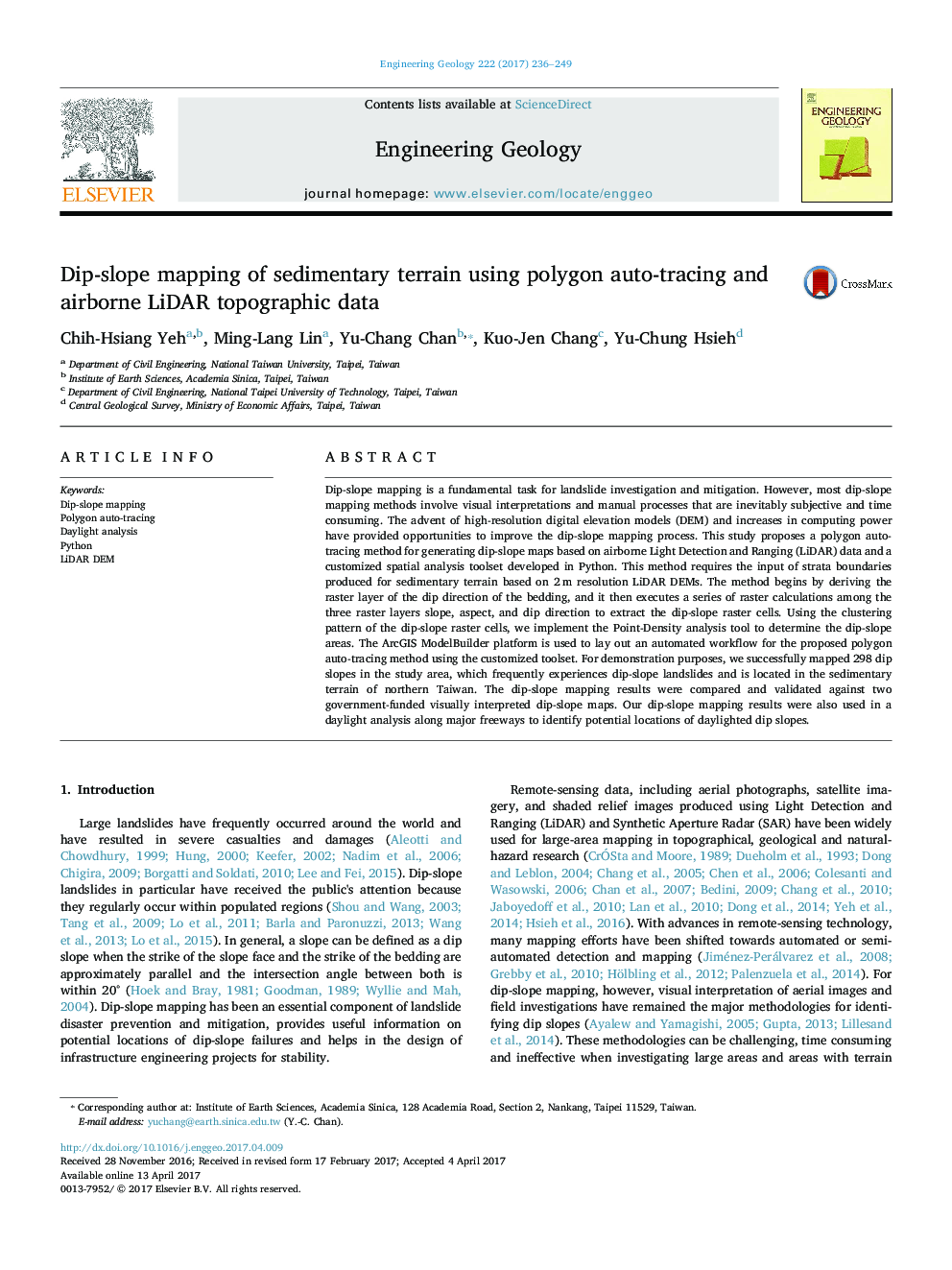| کد مقاله | کد نشریه | سال انتشار | مقاله انگلیسی | نسخه تمام متن |
|---|---|---|---|---|
| 5787629 | 1641763 | 2017 | 14 صفحه PDF | دانلود رایگان |

- A polygon auto-tracing method was proposed for dip-slope mapping using LiDAR data.
- An ArcGIS spatial analysis toolset was developed using Python for dip-slope mapping.
- New mapping results show efficiency and reliability using the proposed method.
- The daylighted slopes along the freeways in the study area were successfully identified.
Dip-slope mapping is a fundamental task for landslide investigation and mitigation. However, most dip-slope mapping methods involve visual interpretations and manual processes that are inevitably subjective and time consuming. The advent of high-resolution digital elevation models (DEM) and increases in computing power have provided opportunities to improve the dip-slope mapping process. This study proposes a polygon auto-tracing method for generating dip-slope maps based on airborne Light Detection and Ranging (LiDAR) data and a customized spatial analysis toolset developed in Python. This method requires the input of strata boundaries produced for sedimentary terrain based on 2Â m resolution LiDAR DEMs. The method begins by deriving the raster layer of the dip direction of the bedding, and it then executes a series of raster calculations among the three raster layers slope, aspect, and dip direction to extract the dip-slope raster cells. Using the clustering pattern of the dip-slope raster cells, we implement the Point-Density analysis tool to determine the dip-slope areas. The ArcGIS ModelBuilder platform is used to lay out an automated workflow for the proposed polygon auto-tracing method using the customized toolset. For demonstration purposes, we successfully mapped 298 dip slopes in the study area, which frequently experiences dip-slope landslides and is located in the sedimentary terrain of northern Taiwan. The dip-slope mapping results were compared and validated against two government-funded visually interpreted dip-slope maps. Our dip-slope mapping results were also used in a daylight analysis along major freeways to identify potential locations of daylighted dip slopes.
Journal: Engineering Geology - Volume 222, 18 May 2017, Pages 236-249